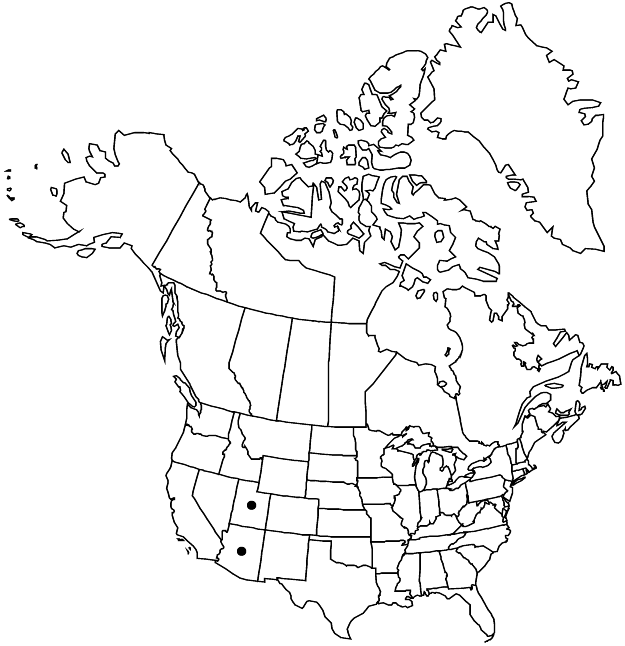Eriogonum zionis var. zionis
Plants erect to spreading, 3–8 (–10) dm. Aerial flowering-stems usually fistulose, glabrous or rarely tomentose. Leaf-blades oblong-ovate to ovate, 2–4.5 × 1.5–2.5 cm. Inflorescences 20–45 (–60) cm. Involucres 1.5–3 mm. Flowers 2–3.5 (–4) mm; perianth white to yellow.
Phenology: Flowering Jul–Oct.
Habitat: Deep sandy soil, sagebrush communities, scrub oak, juniper, pinyon, and montane conifer woodlands
Elevation: 1300-2100 m
Discussion
Variety zionis is found in scattered populations in Kane, San Juan, Washington, and Wayne counties, Utah, and in northern Coconino and northeastern Mohave counties, Arizona. It is rare or only locally infrequent. Occasionally, plants with tomentose flowering stems occur with glabrous individuals. The Zion wild buckwheat, with a chromosome number 2n = 40 (J. L. Reveal, unpubl.), is distinct from the related E. racemosum, with 2n = 36, and no intermediates are known.
Selected References
None.
Lower Taxa
"dm" is not declared as a valid unit of measurement for this property."dm" is not declared as a valid unit of measurement for this property."dm" is not declared as a valid unit of measurement for this property."dm" is not declared as a valid unit of measurement for this property.
